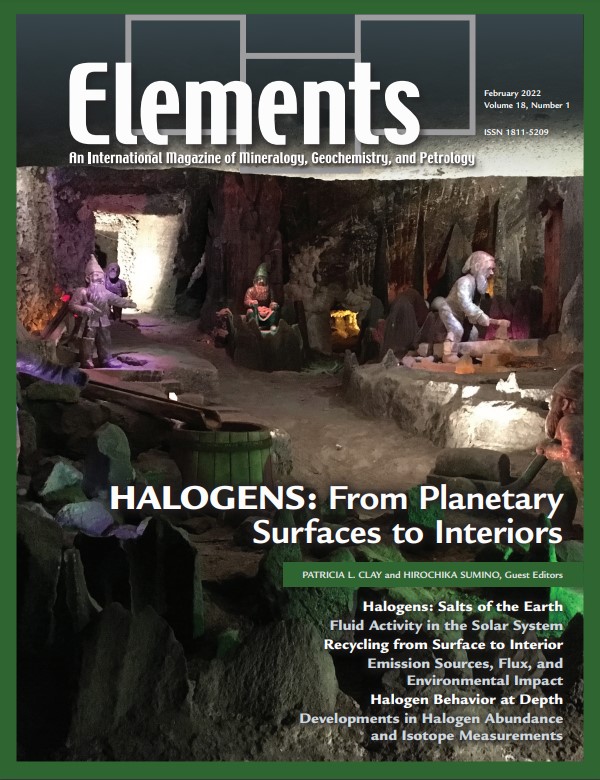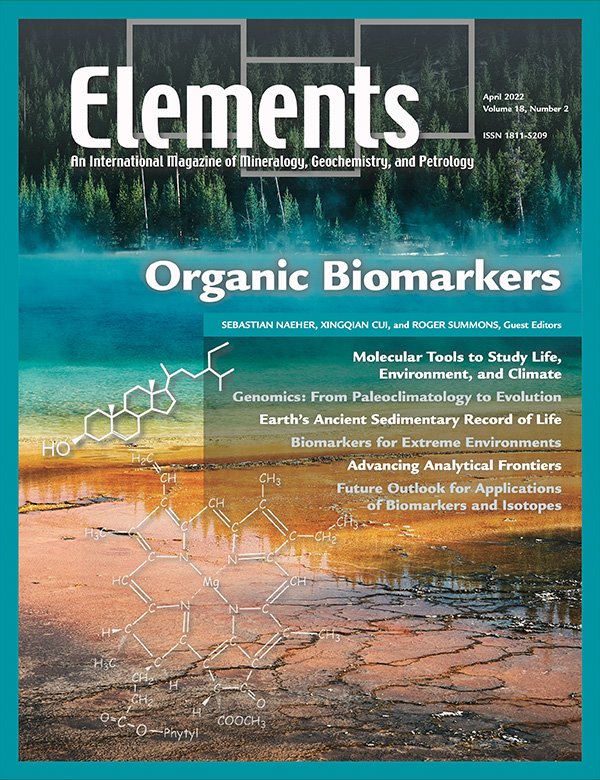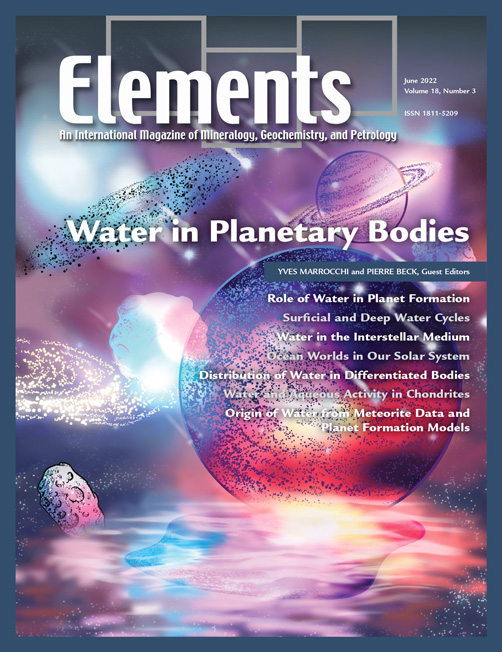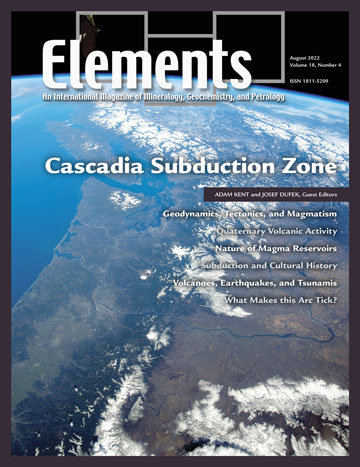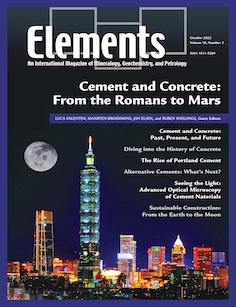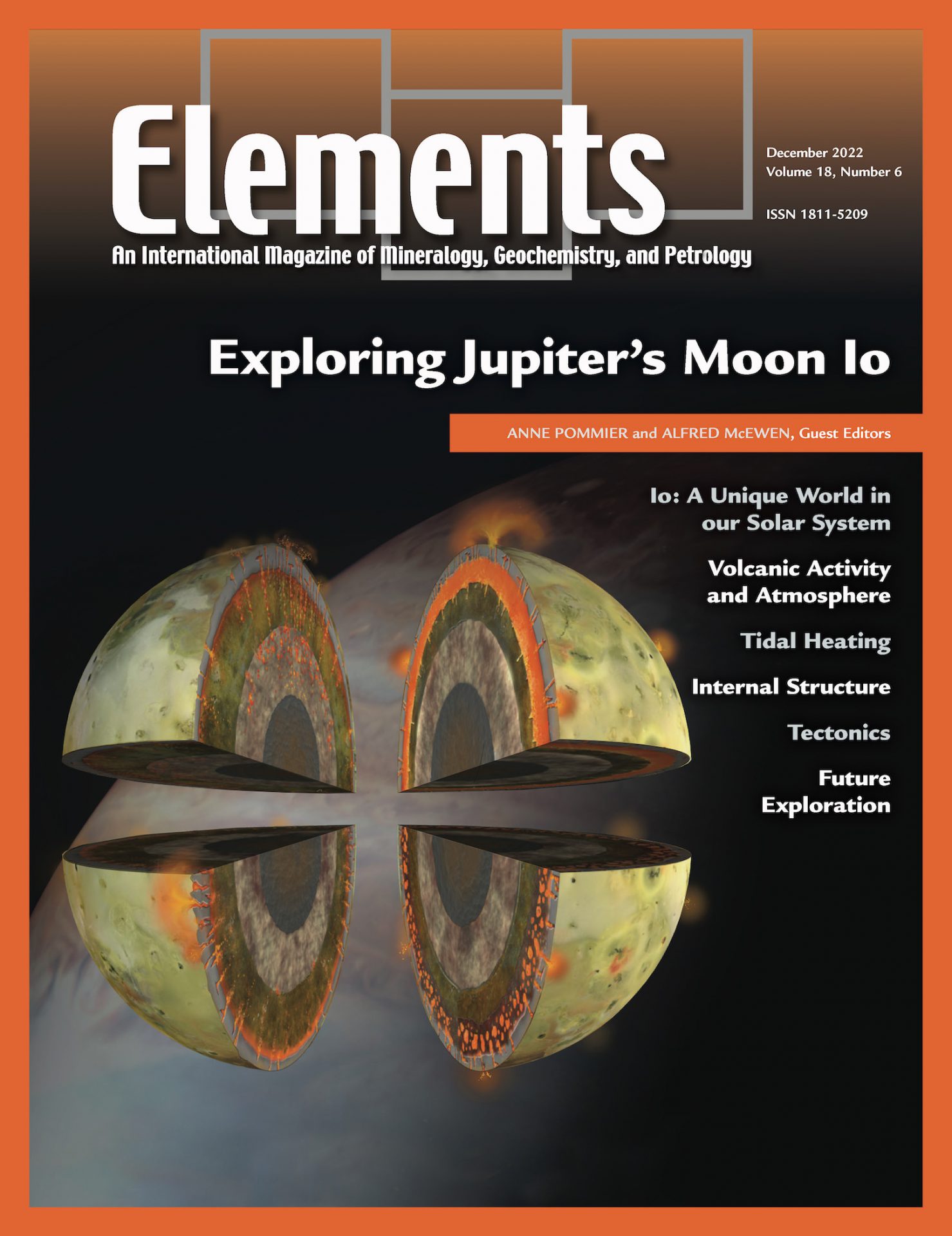Issues Published in 2022 -- Volume 18
- February (v18n1) Halogens: From Planetary Surfaces to Interiors
- April (v18n2) Organic Biomarkers
- June (v18n3) Water in Planetary Bodies
- August (v18n4) Cascadia Subduction Zone
- October (v18n5) Cement and Concrete: From the Romans to Mars
- December (v18n6) Jupiter’s Moon Io
February 2022 – Volume 18 Number 1
Halogens: From Planetary Surfaces to Interiors
GUEST EDITORS
Patricia L. Clay and Hirochika Sumino
PRINCIPAL EDITOR
Becky Lange
April 2022 – Volume 18 Number 2
Organic Biomarkers
GUEST EDITORS
Sebastian Naeher, Xingqian Cui, Roger Summons
PRINCIPAL EDITOR
John Eiler
June 2022 – Volume 18 Number 3
Water in Planetary Bodies
GUEST EDITORS
Yves Marrocchi and Pierre Beck
PRINCIPAL EDITOR
Richard Harrison
August 2022 – Volume 18 Number 4
Cascadia Subduction Zone
GUEST EDITORS
Adam Kent and Josef Dufek
PRINCIPAL EDITOR
Becky Lange
October 2022 – Volume 18 Number 5
Cement and Concrete: From the Romans to Mars
GUEST EDITORS
Luca Valentini, Maarten Broekmans, Jan Elsen, and Ruben Snellings
PRINCIPAL EDITOR
Janne Blichert-Toft
December 2022 – Volume 18 Number 6
Exploring Jupiter's Moon Io
GUEST EDITORS
Anne Pommier and Alfred McEwen
PRINCIPAL EDITOR
Richard Harrison


